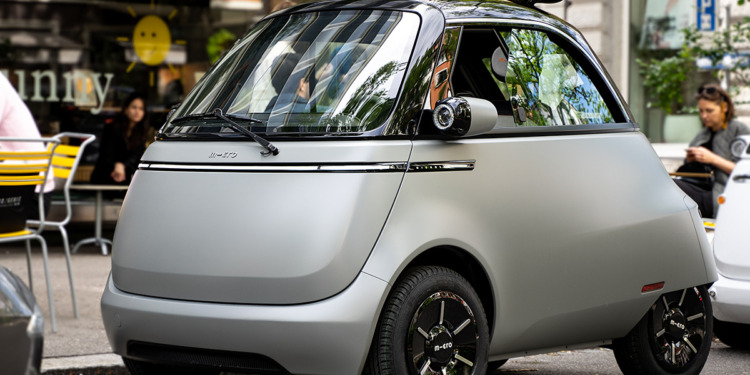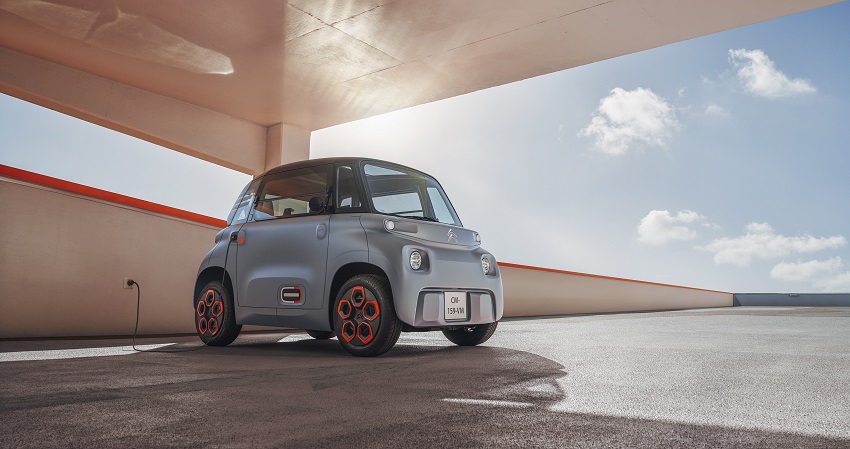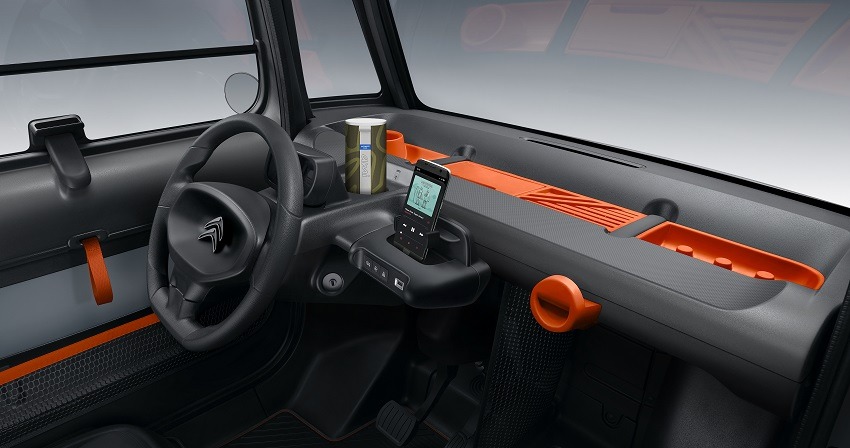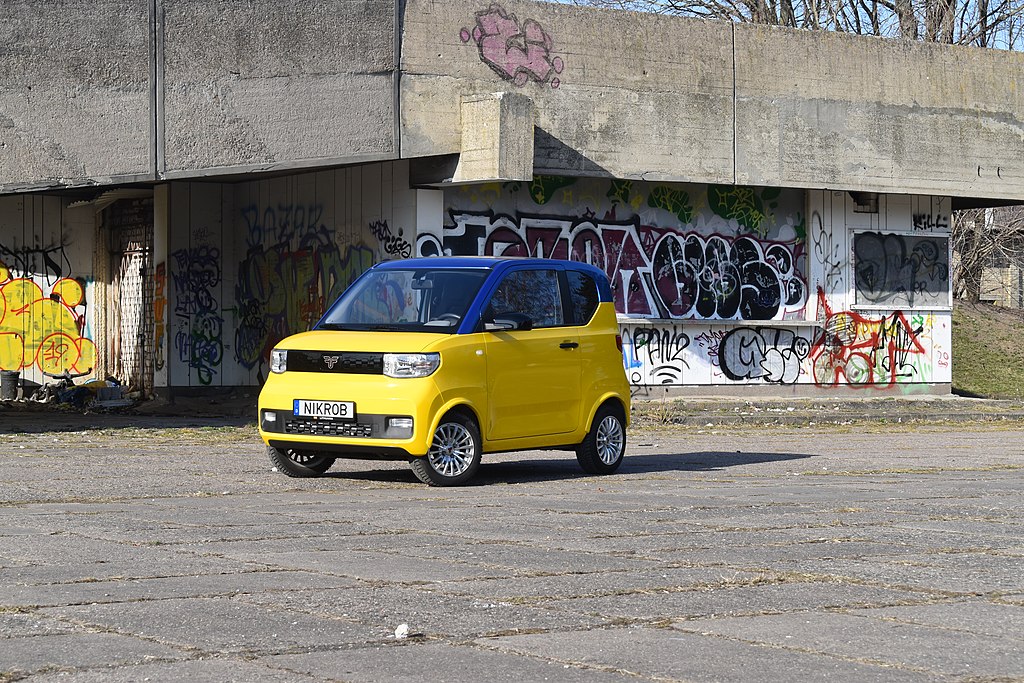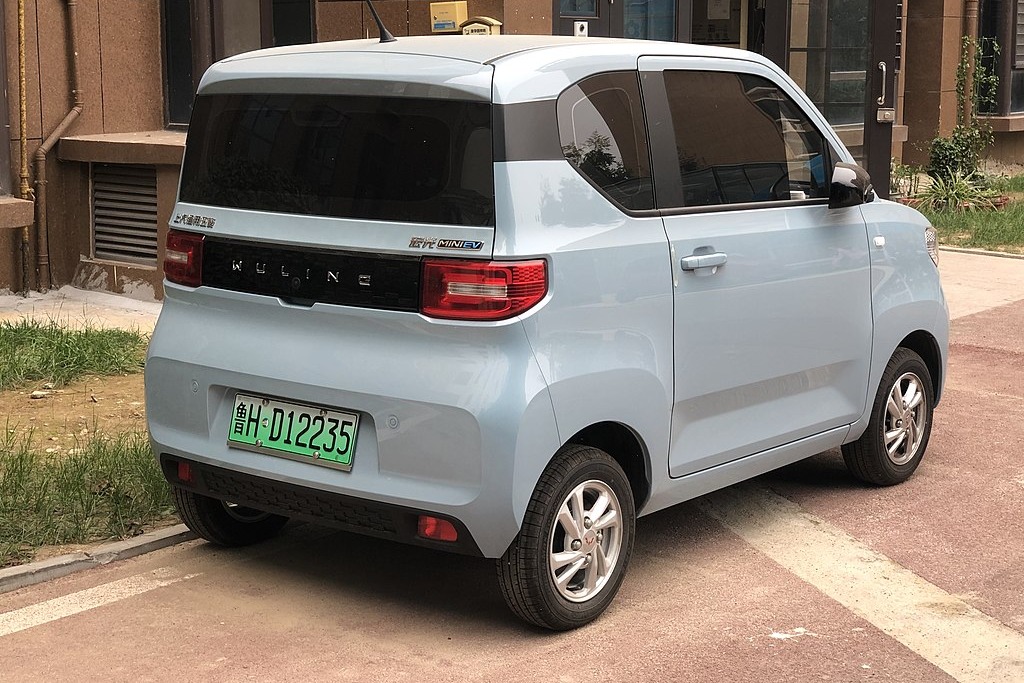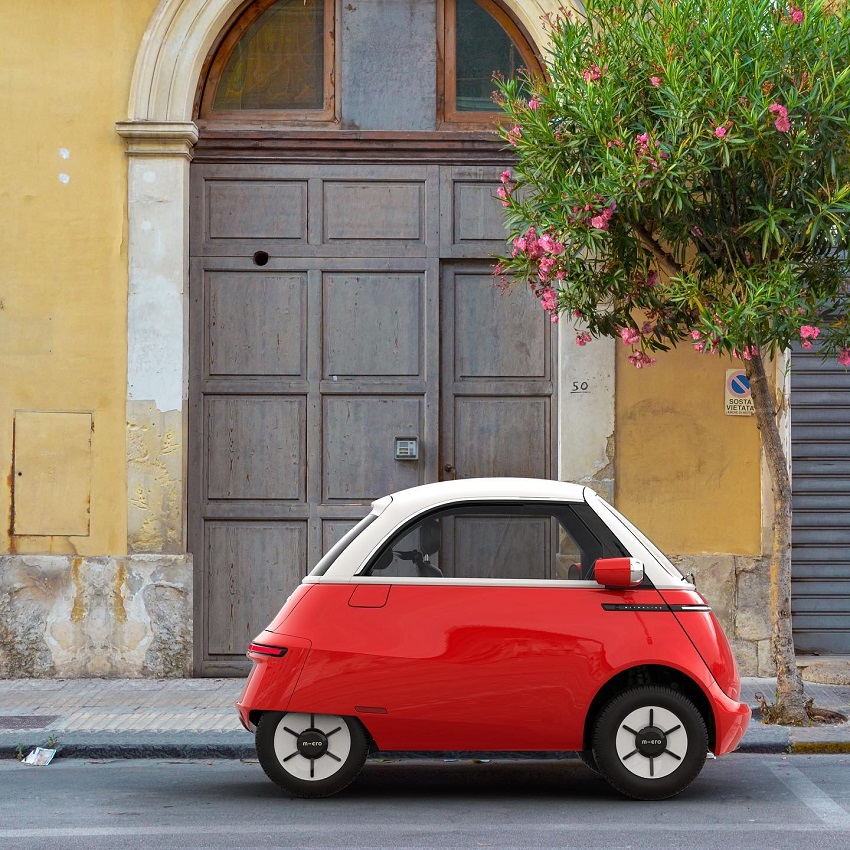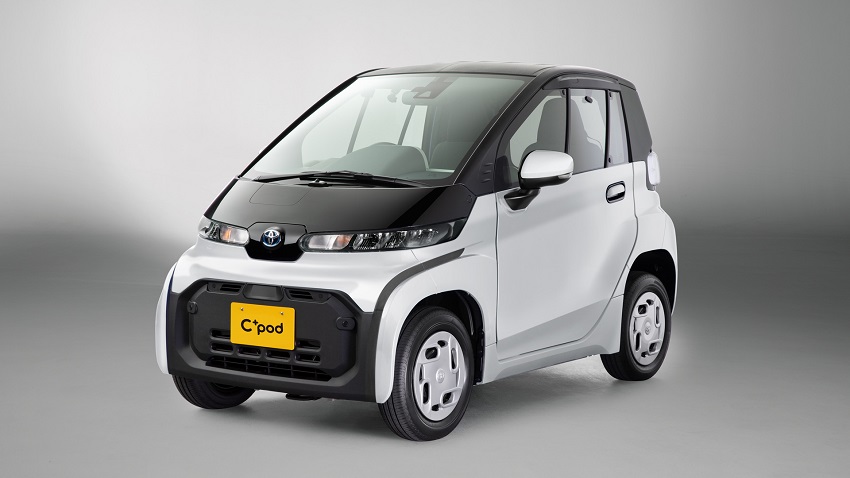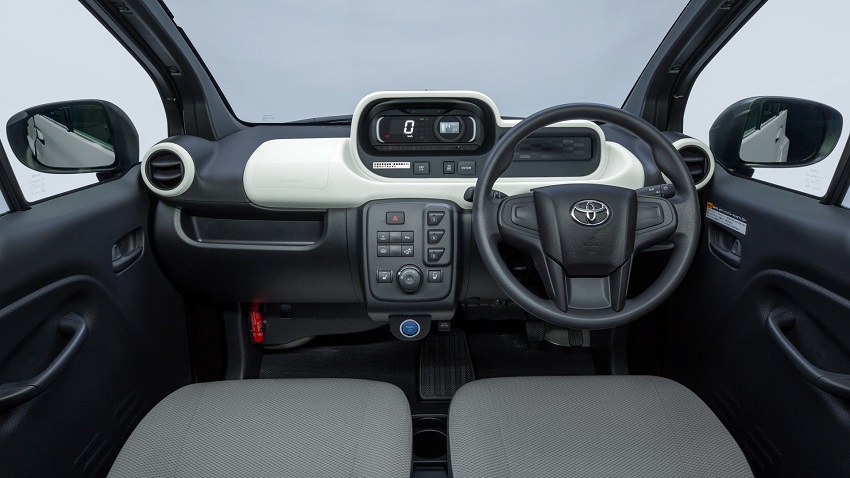Small EVs could become crucial in congested urban areas to reduce emissions and to help sustainable mobility. While using public transport, including trains, underground, or busses should always be the first option, there are some situations where driving your own vehicle is necessary. In this context, choosing small EVs could be the right choice.
The European Parliament, just yesterday, voted to ban selling new fossil-fuel cars across Europe from 2035. It is now time, more than ever, to switch to greener vehicles even before the 2035 deadline.
In this article, we have a look at five different small EVs that could be the perfect choice for that. They are either already on the market or will be soon. Which one is your favorite?
Check UK’s best electric cars, or if you’d rather buy an electric bike we got you covered
Citroën AMI
Launched just a few months ago, and with the option either to buy or lease for short and long-term, the AMI by Citroën is a compact quadricycle that is designed to be used almost exclusively in urban areas. A quadricycle is a special class of vehicles that in some countries could be driven by 14 years old teenagers holding a special driving license.
The Ami is the cheapest of the small EVs on this list, with an average price in Europe of around 5,000 €. It has a maximum speed of 45 Km/h, a range of 75 km, and it could be fully recharged in less than three hours from a standard socket.
Creating an affordable EV was one of the goals of Citroën for this project and this was achieved with some smart solutions: the front and rear bumper of the AMI are exactly the same, and the two doors too – with the hinges on the same side. As a result of these, it’s hard to tell which part is the front or the back of this car, and the doors also feature opposite openings, regular for the passenger and antagonistic for the driver.
The interior reflects the same concept as the exterior with a minimalistic design. There are two seats and a Bluetooth speaker that can be removed, only three buttons – for the air blower, hazard light, and the heated windscreen – and there is a USB dock to hold and charge your phone.
In the pictures below: Citroën AMI. Pictures Credit: Stellantis – Citroën Media
Renault TWIZY
The Renault TWIZY is the most important competitor of the Citroën AMI in the small EVs category. Compared to the other french quadricycle, the TWIZY costs more, the vehicle design is very particular with two seats, one in front of the other, and you actually have to pay extra if you want real doors.
This quadricycle has been for sale since 2012 and just over 30,000 TWIZY have been sold – the majority in Europe. Interesting fact: at the beginning, Renault would not allow TWIZY customers to buy the battery pack of the car which was subject to a monthly fee. This has changed now, and batteries are now included in the cost of the car.
With a maximum range that could reach over 120 Km – depending on the version – the TWIZY seems the perfect option for those driving mostly in cities and looking for an alternative to motorbikes.
In the pictures below: Renault TWIZY. Pictures Credit: Wikimedia.
RELATED ARTICLES: Helping Make Electric Vehicle Ownership Accessible To All | Is Using Synthetic Fuels A Sustainable Alternative To Buying Electric Cars? | Chasing Tesla: 5 EVs Startups Looking to Become The Next Unicorn | World’s Electric Vehicle Fleet Will Soon Surpass 20 Million | Our Sustainable Future: Electric Dream Cars |
Wuling Hongguang Mini EV
An article about small EVs could not be complete if we don’t mention one of the best-selling EVs in the world, the Wuling Hongguang Mini EV. It is actually the best-selling EV in China – just in front of the Tesla Model 3.
This Mini EV is the only four-seater on this list of small EVs. It has a maximum range of 120 Km and a top speed of 100 km/h. There’s no fast charging available and this car can fully charge in six and a half hours.
The EV by Wuling was launched at the end of 2020 and it was only available in China. Recently, Latvian group Dartz bought the license to produce the car in Europe and it is now sold under the name of FreZe Nikrob. Interestingly, FreZe was a carmaker company in the early 1900s selling electric vehicles as well. The Nikrob is available in two versions with different ranges and at a very competitive price.
In the pictures below. In yellow the FreZe Nikrob. In grey Wuling Hongguang Mini EV. Photo Credit: Wikimedia
Microlino 2.0
If there was an award for the best looking car in this list of small EVs, the Microlino 2.0 would easily win. This small EV design actually recalls the Isetta, an Italian microcar from the 1950s.
Co-Founders Oliver & Merlin Ouboter had the idea of launching this car – The Microlino – already in 2018 but their plan had to stop, so they took this time to work even more on the concept of a new sustainable, functional vehicle which is now called Microlino 2.0.
Compared to the AMI or the TWIZY from our list, the Microlino 2.0 is the only one to have a unibody steel chassis which is similar to what is used in larger cars like Tesla. It has also a maximum range of 230 km and a top speed of 90 Km/h.
Cecomp, an Italian automotive company well known for developing prototypes and models for car manufacturers such as Lancia, Maserati, and Toyota will produce the Microlino 2.0 in Turin. There are already over 30,000 reservations for it, and while the official launch was just a few weeks ago, deliveries will begin in 2022 first in Switzerland, Germany, and Italy. The rest of Europe will have to wait until 2023 to drive the Microlino.
If you like this car you can fully configure it and order it online on Microlino’s website. On the website, you can also check the events and the showrooms where you can actually see or test the Microlino!
In the pictures below: The Microlino. Photo Credit: Microlino.
Toyota C+Pod
The C+Pod is a small EV that was originally launched in Japan exclusively for car-sharing and for corporate use. The car had so much success that Toyota decided to sell it to the public at large at the beginning of 2022. Unfortunately, the C-Pod is only available in Japan at the moment, but hopefully, the Japanese carmaker will decide to export it abroad too
The C+Pod has a maximum range of 150 km and can be fully charged in either eight or sixteen hours – depending on the charger used. It is also homologated as a quadricycle so, while it won’t be allowed to go on motorways, it would be possible to drive for teenagers too if exported to Europe.
According to the Kelley Blue Book, EVs are on average 10,000 $ (9,250 Euros) more expensive to buy compared to “regular” cars. That is a big issue for many, and a reason why not everyone can afford an EV just yet. In this context, small EVs could play an important role by allowing more people to drive greener vehicles and reducing emissions at the same time.
In the pictures below: Toyota C+Pod. Photo Credit: Toyota.
Editor’s Note: The opinions expressed here by Impakter.com columnists are their own, not those of Impakter.com –In the Featured Photo: The Microlino, a new small EV. Photo credit: Microlino.


